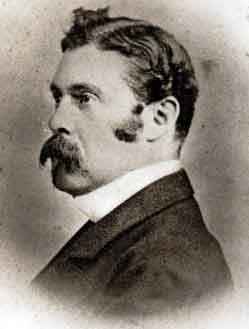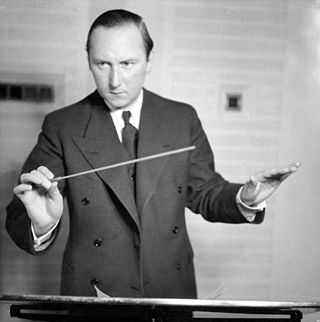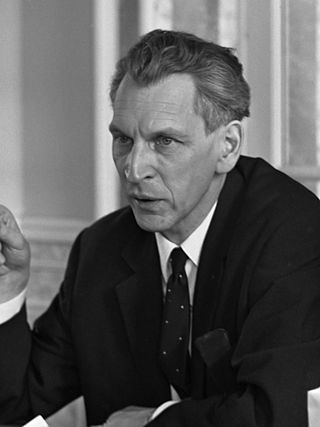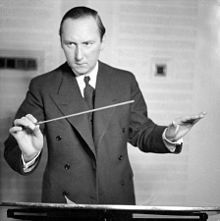Hyacinthe Jadin was a French composer who came from a musical family. His uncle Georges Jadin was a composer in Versailles and Paris, along with his father Jean Jadin, who had played bassoon for the French Royal Orchestra. He was one of five musical brothers, the best known of whom was Louis-Emmanuel Jadin.

Franz Ries was a Romantic German violinist and composer, son of Hubert Ries. He studied at the Paris Conservatory. He also worked in the publishing business.
An organ concerto is an orchestral piece of music in which a pipe organ soloist is accompanied by an an orchestra, although some works exist with the name "concerto" which are for organ alone.
Dmitry Kabalevsky's Preludes, Op. 38 are a set of 24 piano pieces in the Chopinian model, each based on a folksong and each in a different key. It was composed in 1943–44, and dedicated to Nikolai Myaskovsky, his teacher. It is one of a number of examples of music written in all 24 major and minor keys.

Marie-Alexis de Castillon de Saint-Victor was a French composer.

God in Disguise, Op. 24, is a cantata for narrator, soprano, baritone, mixed choir, and orchestra written in 1940 by Swedish composer Lars-Erik Larsson. Tuneful and pastoral in style, the neoromantic God in Disguise is a setting of a 1933 narrative poem by the Swedish poet Hjalmar Gullberg; Gullberg's poem is itself based on the prologue to a Hellenic play, in which the god Apollo is exiled from Olympus and condemned to mortal servitude as a flute-playing Thessalian shepherd. The cantata, which premiered over Swedish Radio on 1 April 1940 under the composer's baton, was an instant success. It remains not only one of Larsson's most celebrated compositions, but also one of the most frequently performed pieces of Swedish art music.

Marius Flothuis, born and died in Amsterdam, was a Dutch composer, musicologist and music critic.

The Symphony No. 3 in C minor, Op. 34, is a four-movement orchestral composition written from 1944 to 1945 by the Swedish composer Lars-Erik Larsson. The piece premiered in Stockholm on 10 February 1946 with Tor Mann conducting the Concert Society Orchestra. In response to unfavorable critical reviews, Larsson immediately withdrew the symphony after its premiere—a fate that, too, had earlier befallen his First and Second symphonies.

The Symphony No. 2 in E minor, Op. 17, is a three-movement orchestral composition written from 1936 to 1937 by the Swedish composer Lars-Erik Larsson. The piece premiered in Stockholm on 24 November 1937 with Larsson conducting the Concert Society Orchestra. In response to unfavorable critical reviews, Larsson immediately withdrew the symphony after its premiere—a fate that, too, had earlier befallen his First and would later befall his Third symphonies.

The Pastoral Suite, Op. 19, is a three-movement suite for orchestra written in 1938 by Swedish composer Lars-Erik Larsson. The suite remains not only one of Larsson's most celebrated compositions, but also one of the most frequently performed pieces of Swedish art music. In particular, the Romance (No. 2) is often performed and recorded as a stand-alone concert piece.

A Winter's Tale, Op. 18, is a four-movement suite for orchestra written from 1937 to 1938 by Swedish composer Lars-Erik Larsson. The Epilogue (No. 4) is often performed and recorded as a stand-alone concert piece.

The Symphony No. 1 in D major, Op. 2, is a four-movement orchestral composition written from 1927 to 1928 by the Swedish composer Lars-Erik Larsson. A student piece, the symphony marked the conclusion of Larsson's composition studies at the Royal Swedish Academy of Music, at which he had matriculated in 1925.

The Saxophone Concerto, Op. 14, is a three-movement concertante composition for alto saxophone and string orchestra written in 1934 by the Swedish composer Lars-Erik Larsson. The piece premiered on 27 November 1934 in Norrköping, Sweden, with Tord Benner conducting the Norrköping Orchestral Association. The soloist was the German-born American virtuoso Sigurd Raschèr, its dedicatee, whom Larsson had consulted during the compositional process; as such, the concerto incorporated several Raschèr's pioneering techniques—"highly personal tricks and devices". Because the Saxophone Concerto proved too difficult for most soloists, Larsson "simplified" it in the early 1980s to make it more accessible.

Intimate Miniatures, Op. 20, is a four-movement suite for string quartet written in 1938 by the Swedish composer Lars-Erik Larsson. Originally, the pieces were part of a longer, six-movement "lyrical suite" called Late Autumn Leaves, which Larsson had written to accompany a recitation of poems about fall by the Swedish writer Ola Hansson.

The Violin Concerto, Op. 54, is a three-movement concertante composition for violin and orchestra written in 1952 by the Swedish composer Lars-Erik Larsson. The piece premiered over Swedish Radio on 11 January 1953 in Stockholm, Sweden, with Sten Frykberg conducting the Swedish Radio Orchestra. The soloist was the Hungarian violinist André Gertler, its dedicatee.




